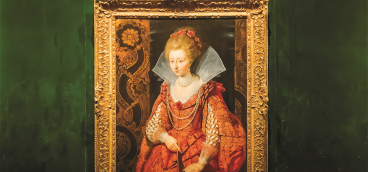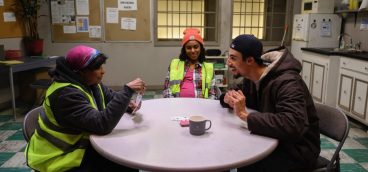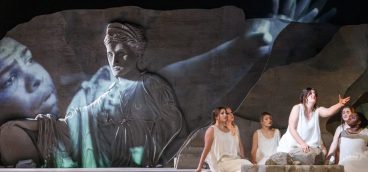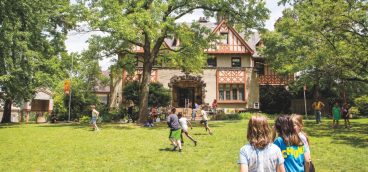
In pockets across Pittsburgh, a new and different city is emerging, one in which internationals and creatives are finding a foothold in neighborhoods that long have struggled for new vitality. A prime example of this is in Garfield, where Henry Simonds of Headwater Media envisioned a new kind of social enterprise for his hometown.
The grandson of the late civic and industrial leaders Elsie and Henry Hillman purchased two buildings along Penn Avenue that would become the canvas for what he and co-collaborator Casey Droege call the Pedantic Arts Residency.
Simonds is an independent filmmaker and while pursuing his Masters in Fine Art, he appreciated the time and the impact that artistic research and discussion had on him, and he began to envision, as he says, “a space that could foster similar conversations and inquiries, not just for myself but for the broader artistic community in Pittsburgh.”
He finished renovating the buildings at the corner of Penn and Atlantic avenues in 2022 and contacted artist and cultural producer Casey Droege. They decided to collaborate, with Droege suggesting that the new residency invite one curator, one writer, and one artist to spend a month together in Pittsburgh. What has emerged is a cross-disciplinary residency including people from around the world.
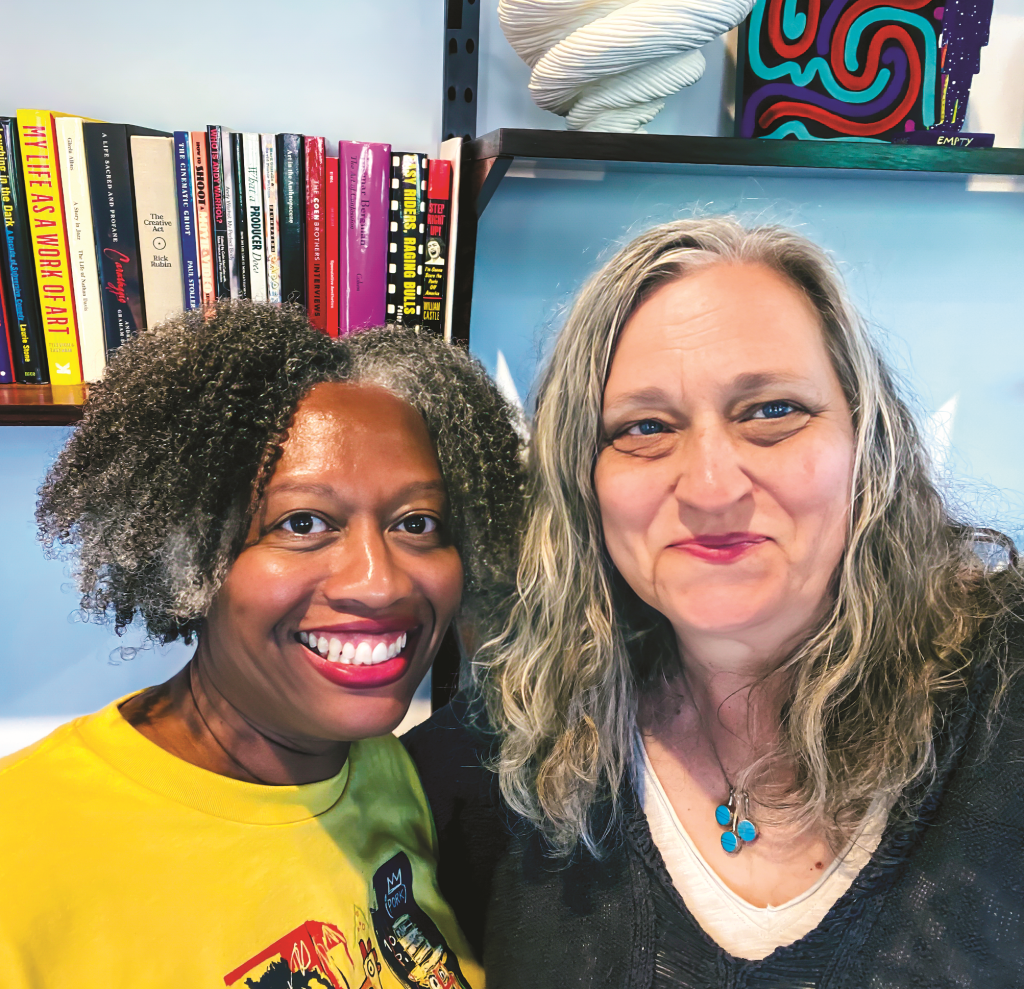
The four-week residency occurs twice a year, in January and in June, with a different trio of participants in each. And it’s atypical of similar programs, Droege said, in that “We don’t require our residents to produce anything. The emphasis is on connections, conversations, and the freedom to explore new ideas and the space they need to find the sparks of something new.”
This approach allows for the unique creative alchemy that Simonds originally envisioned. “We hope that we select people who are inherently collaborative and interested in expanding their practices,” he said. “By having separate disciplines and no production mandate, we remove any competitive stressors or barriers to exploration that the need to produce might create.”
Shared living quarters designed by Moss Architects and group experiences further enhance the potential for collaboration. Each resident is also paired with a Pittsburgh-based guide who helps them connect with relevant activities, resources, and local professional contacts. “Each resident goes through a series of conversations with us so we can build relevant and authentic relationships for them during their time,” Droege said. “Most residents arrive in Pittsburgh without a car, so being in a central neighborhood that also includes several significant arts organizations (Assemble, Boom, Bunker, Silver Eye) helps them get connected quickly.”

Garfield’s galleries and arts organizations provide the perfect backdrop for this creative journey. The monthly First Friday gallery crawl, Unblurred, offers residents a chance to immerse themselves in the local art scene. Weekly programming, including private dinners, studio visits, and museum tours, enhances their experience.
This summer represented Pedantic’s fifth cohort and among the three participants was Arinitwe Peter, a contemporary visual “artivist” from Uganda who focuses on a variety of issues related to African progress. “Pittsburgh has been such a big bowl of art for my hunger in the art industry,” he said. “I have had a great feast of knowledge from conversations with a few artists. The conversations range from their creations, projects, funds, inspirations, and personalities. What inspired me more about Pittsburgh’s art scene is the artists, curators, writers, managers, and funders are in touch with each other. The art industry here is huge, yet connected like a chain. Another inspiration was the mushrooming art programs. Art is everywhere; it’s a community of colors, from murals all over the spaces, to open studios, to residences, to bodies as a canvas for tattoos.”

Maritza Bautista is a multidisciplinary artist and educator from Texas who focuses on economic disparities and the survival mechanisms of working-class communities. Of Pittsburgh, she said: “It just seems like it’s a big community with a lot of support for artists. There are a ton of organizations. It was fascinating to discover that Pittsburgh has the most foundations per capita in the U.S., providing a stable source of support for the arts. It’s not just about museums but the integration of street art and community spaces that enrich this city.”
For Floridian Katherine Garland, who focuses on women’s issues in her memoirs, “The residency didn’t influence my writing as much as it inspired me to use my writing to be more community-centered.”

Simonds believes that the residency and Pittsburgh enrich each other in a two-way process. “We often suffer from a lack of context when thinking about the city and our creative community. So when the opportunity to listen to outsiders who have been immersed in the city and its culture offer their perspective, it is refreshing and valuable.”
The impact of the residency often extends beyond its four-week duration, Droege said. “Each cohort that has attended has gone back to their homes and brought Pittsburgh with them. Sometimes that has taken the shape of a project — like Elise Butterfield curating Pittsburgh-based artist Fran Flaherty into a show in Chicago, or an essay about something in Pittsburgh, like Josh Ware’s piece on Gallery Closed. We’ve even had several folks look at houses here and seriously consider moving to Pittsburgh.
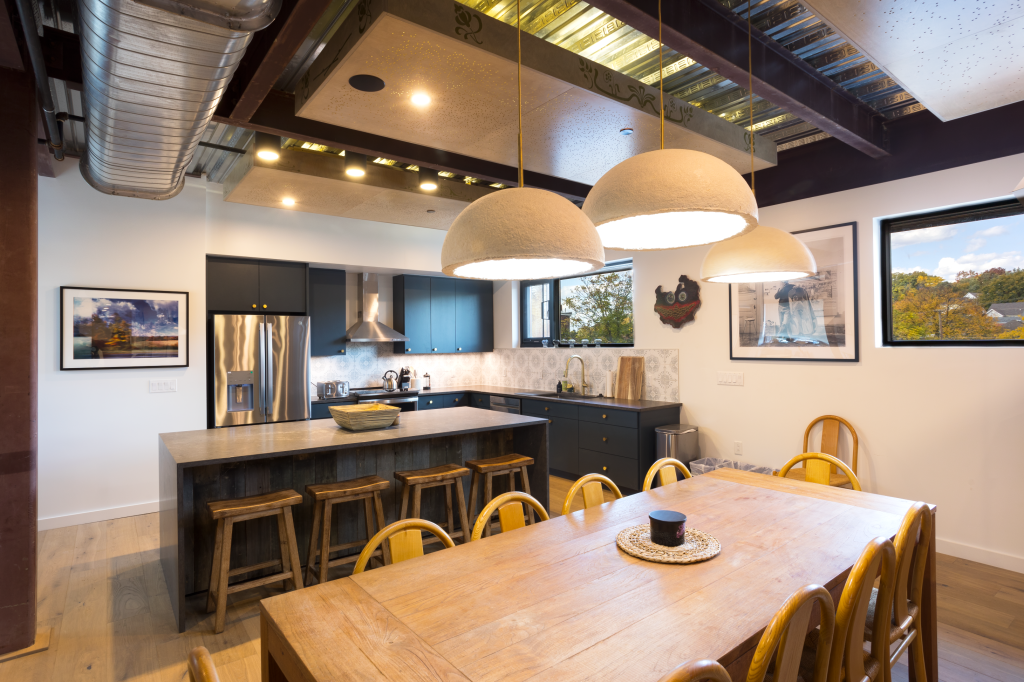
“We’ve seen a range of reactions to this structure, from pure joy to feeling overwhelmed. With each cohort, and even each individual, it’s a completely different experience. I love that we get to create a loose structure that gives them the freedom to build the experience they need. And with each cohort, we get better at describing the possibilities and building resources for our residents. We’re in our third year and we’re just starting to see some of the effects of this project play out. It’s exciting to imagine what could happen 10 years from now.”




